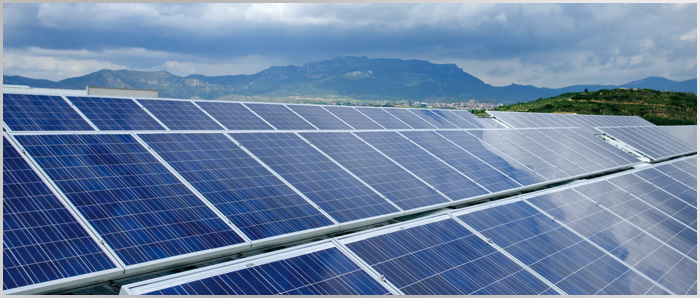
There are currently three solar photovoltaic (PV) power plants operating in Chile and together they represent a capacity of 2.48 megawatts (MW) distributed between the two main electricity systems: SIC and SING. Of course, very soon the humble condition of this source in the generation matrix will change, since the authority’s estimate is that by the end of this year at least two new units, linked to the company SunEdison, will come into operation, totaling more than 100 MW.
The fact that the physical conditions are more than adequate, with the levels of radiation in the north of the country, added to the availability of land suitable for the installation of this infrastructure, are known advantages for the development of this type of energy.
Despite the above, this source was at a lower level, due to the action of other types of factors, economic, legal and operational, which have improved recently.
Today, between 1,500 and 1,800 MW could be built in Chile, and by 2020 it would be feasible to double this amount, reaching 4,000 MW of solar PV energy, which would provide more than 10% of the energy that Chile will require by that date”, projects Alfredo Solar, president of Acera, an association of renewable energy developers.Alfredo Solar, president of Acera, an association that brings together developers of Non-Conventional Renewable Energies (NCRE), projects that, based only on the optimizations that are being made in the transmission systems to increase their capacity and to avoid disturbances by mixing contributions from traditional and NCRE units, which have a variable operation, “it would be feasible to double this amount by 2020, reaching 4,000 MW of solar PV energy that would contribute more than 10% of the energy that Chile will require”.
Although in light of the current presence of solar PV energy, these estimates may seem far off, the opposite is evident when looking at the figures of the Environmental Assessment Service, where 36 projects, with a total capacity of 2,753 MW, are approved, while another 1,440 MW are in the pipeline, i.e., just over 4,000 MW are seeking development.
Economic momentum
The Undersecretary of Energy, Sergio del Campo, states that undoubtedly the prospect of higher domestic energy prices, due to the lack of traditional resources, coupled with the fall in investment costs of technologies such as solar, have increased the attractiveness of this business, because they make it competitive with respect to other thermal alternatives such as coal, for example.
Solar explains that these PV plants can offer energy at prices between US$ 90 and US$ 95 per MWh, similar to coal and lower than what liquefied natural gas allows. The investment cost is estimated at US$ 1.7 million per MW installed.
Another attribute highlighted by Del Campo is the shorter time required for the installation of these parks, compared to any other type of traditional installation. In this regard, Solar specifies that construction can take between six and twelve months.
The needs posed by climate change and the NCRE Law, in force since 2008, have created new opportunities for this energy from the hand of large electricity customers.
There are several examples of this new relationship. One of them is SunEdison, which is developing three solar PV projects in partnership with large generators and companies such as CAP. However, supply to regulated customers, through distributor tenders, is another option, after the government announced that it will reduce the size of the blocks it will offer.
“More flexibility is needed. Today the tenders are designed for baseload power, which puts intermittent technologies at a disadvantage,” says Carlos Barrera, general manager of SunEdison Chile.
Source / Diario Financiero



